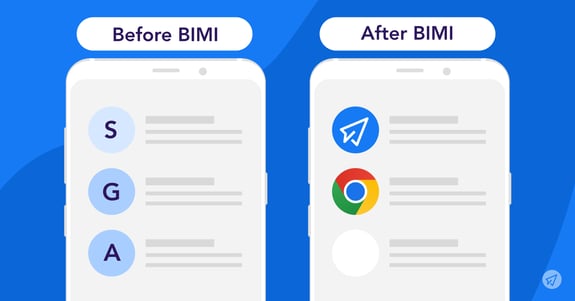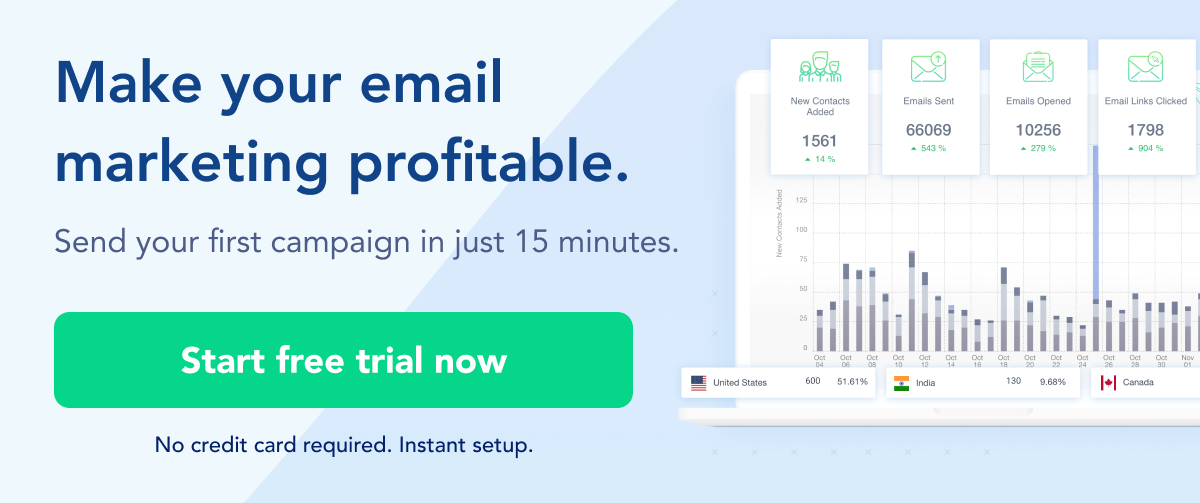Email remains one of the most powerful marketing channels for reaching a target audience, but it is not without pitfalls. Phishing and fraudulent emails are on the rise and continue to be a serious obstacle for both businesses and consumers. This problem affects email deliverability and open rate. Without email authentication (DMARC), your domain may be used for sending emails to your clients, partners, affiliates or partners. DMARC encryption turns off phishing linked to a specific domain and provides 100% visibility and control over who is sending emails under your name.
With DMARC in place, companies are implementing BIMI, a relatively new authentication standard, for another layer of protection, akin to how businesses adopt virtual desktop solutions for secure and efficient digital workflows. Virtual desktop solutions create a safe environment and allow users to access their desktops from various devices, while BIMI establishes a standardized method for displaying brand logos in emails. Both concepts incorporate elements of authentication and security. Virtual desktop solutions usually require secure login procedures, and BIMI involves email authentication to verify the sender and their brand logo.
BIMI stands for Brand Indicators for Message Identification. It allows recipients to see your logo next to their incoming email in the inbox. The new standard provides additional authentication of the sender, increases email deliverability, and prevents fraud from those who do not comply with the SPAM-CAN law. BIMI works with DMARC, DKIM and SPF to allow recipient email providers to correctly identify the company and allow your messages to appear in the inbox.
Table of Contents
Understanding BIMI
What is BIMI? It serves as a crucial component in email authentication. This protocol allows brands to control the logo displayed in all emails they send. Such an innovative standard adds a visual layer to traditional email authentication methods like DMARC, DKIM, and SPF. BIMI enables brands to display their logos alongside authenticated emails, providing recipients with a recognizable visual cue. The visual verification element allows brands to build trust. This forward-looking approach creates a safer, more transparent communication environment for businesses and their consumers. Let’s see how exactly it works.
How Does BIMI work?
In simple words, BIMI is a text file. It has a specific format and is located on your sending servers. When a message is delivered, the service of the recipient checks this file to verify the message. After the verification, the BIMI file instructs the recipient’s mail service to add the sender’s logo to the email. It all looks straightforward enough, but the protocol has some requirements:
- Your email should be authenticated by SPF, DKIM and DMARC
- You should set up a new BIMI DNS entry
- You should provide an SVG file of your logo
- You should have a VMC certificate (Verified Mark Certificate). It is optional for now.
Currently, not all email providers support BIMI, but this standard is becoming more popular when it comes to email privacy measures.
The Importance of BIMI
Do you need BIMI? Actually, today, this is the only protocol that enables the email recipient to visually identify an email’s source and authenticity.
Enhanced email trust and deliverability
Email deliverability relies heavily on authentication and reputation rather than the email content itself. So, integrating BIMI becomes an additional tool to enhance your chances of landing in the inbox. It directly contributes to a reduction of unsubscribes and spam complaints.
Improved brand recognition and customer trust
The visual representation of your brand fosters your trust among recipients. It allows you to market your brand even before a recipient opens your email. BIMI not only strengthens your identity but also enhances user experience. This, in turn, creates a more harmonious and trustworthy relationship between your brand and its audience.
Mitigation of phishing and email fraud
With BIMI, you add an additional layer of defence against phishing attempts and other fraudulent emails. Messages without recognizable logos become increasingly conspicuous and remain unread in the recipient's inbox. BIMI helps build a secure email environment.
Implementing BIMI
When Bimi was only introduced, setting it up was a bit complicated. You needed the developer’s approval to join the pilot program. But now, it's way easier. If you use authentication protocols like DMARC, you are halfway through it.
Steps to set up BIMI for your email domain
Here’s a short guide to using the BIMI email authentication tool:
- Check whether your email service provider supports BIMI.
- Configure your SPF, DKIM, and DMARC authentication protocols.
- Check your domain – domains with low credibility may prevent BIMI from displaying your logo.
- Select a logo you want to add to your emails. The only supported file format is SVG.
- Obtain a VMC.
- Track your email marketing metrics to see how BIMI contributes to your campaign.
To check whether you have done everything correctly, you can use BIMI Inspector.
Requirements and best practices for BIMI implementation
At the moment, a Verified Mark Certificate (VMC) is optional to use for BIMI authentication. However, email senders may be required to get it in the future. It is not a simple whim. A VMC adds more protection against fraudulent emails as it can officially validate a logo. By the way, email providers such as Gmail, Apple and La Poste already require a VMC when working with BIMI.
Your logo must be a registered trademark to meet the stringent validation standards for VMC / BIMI. Check the WIPO website for your organization's logo.
BIMI adoption by major email providers
The first BIMI spec was published in 2019. Since then, the protocol creators have formalized the use of BIMI throughout the industry. The initiative was supported by a number of email service providers. Gmail and Yahoo have supported BIMI since 2021, and Apple and La Poste have implemented it in 2022. According to BIMI adoption research, only 0.14% of the global top ten million domains use BIMI today.
Benefits of BIMI
Brands may doubt the necessity of BIMI, thinking that having DMARC is enough. However, you need to think broader than that. You get undeniable advantages after adding BIMI to your email authentication.
Increase your brand value
Proper implementation of BIMI automatically means having DMARC, SPF and DKIM standards. This demonstrates your commitment to email security and how important it is for your brand to protect your customers and subscribers from cyberattacks.
Build trust
As mentioned above, BIMI adds credibility to your email communications. It gives your consumers confidence that interaction with your content and messages is entirely safe.
Increase email deliverability
The trusted BIMI logo will make your emails stand out from the rest. It increases open rates and reduces the likelihood of spam reports and unsubscriptions. Such metrics play an important role in improving email deliverability and more effective marketing campaigns.
Measuring the Impact of BIMI
How to understand whether this protocol contributes to your marketing campaign? You can obtain a lot of metrics of BIMI’s performance.
Key performance indicators (KPIs) to assess BIMI's effectiveness
- Open rate. Keep an eye on how often your BIMI logo accompanies your emails. You can also use email analytics and tracking tools to check how often people open your emails with BIMI logos. It's a cool way to see if your logo is making its mark!
- Click-Through Rates (CTR). Analyze clicks on links in emails with BIMI logos compared to those without. If having your logo makes users more interested, you will notice higher click-through rates.
- Conversion Rates. Monitor whether emails with BIMI logos generate leads. See if BIMI adds to better conversion rates by building trust and getting people more involved.
- Brand Recognition. Surveys will help you understand whether your brand becomes a more recognizable logo in emails. Keep track of how recognition and trust grow over time.
- Phishing Mitigation. Track if BIMI helps cut down on phishing problems. If it does, you should notice fewer issues with phishing.
Challenges and Considerations
Successful use of BIMI goes beyond its setup. There are some common challenges you should know. Here are three main problems and practical solutions:
DNS configuration issues
- Problem. Incorrect DNS setup can disrupt BIMI and affect the correct logo display.
- Solution. Follow BIMI DNS formatting guidelines. Provide the correct logo URL, Verified Mark Certificate (VMC) reference, and logo hash. Utilize DNS verification tools for accuracy.
Logo design limitations
- Problem. Sometimes, users may find logo scaling somewhat tricky across different email clients.
- Solution. Remember to opt for SVG format. Besides, use clean and simple design, without intricate details, with legible text and graphics. Try to keep the proportions of your logo to avoid distortions.
Limited email client support
- Problem. Not all email clients support BIMI. Thus, your logo will not always be visible.
- Solution. Focus on those email service providers that use BIMI. These are Apple, Gmail, and Yahoo. However, BIMI adoption continues, and its support grows across email platforms. So stay updated on BIMI trends and
Knowing how to deal with these challenges ensures a smoother BIMI implementation, allowing you to enjoy all the benefits the protocol brings.
Real-world examples of BIMI use
Google was among the first companies to implement BIMI in Gmail. With a stunning email service market share of 43%, this step has enabled Google to offer email senders a notable chance to capture the attention of their recipients. Gmail's main goal in trying out BIMI is to make emails more secure by encouraging the use of strong authentication, specifically through DMARC. This aligns with what BIMI creators aim for. BIMI encourages email senders to boost their security measures, safeguarding their domains from being imitated. This reduces the chances of phishing and makes emails more trustworthy and secure for everyone. The ability to have the brand’s logo displayed allows users to get more involved with their emails. It's a win-win for security and a more enjoyable email experience.
Conclusion
The BIMI implementation process may seem daunting at first. However, it is becoming increasingly popular as phishing and other cyberattacks continue to evolve. More and more brands are adopting this email authentication standard, prioritizing the safety and security of their users. Moreover, BIMI is a game-changer for businesses seeking to forge robust connections with their audience. It unleashes the full potential of email campaigns. BIMI elevates deliverability, strengthens brand recognition, and fosters customer engagement. The goal of BIMI is not just about sending safe emails; it's about crafting an impactful and visually compelling email experience that resonates with your audience.



